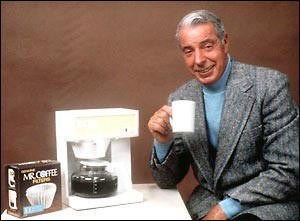This culinary approach to coffee is nothing new to the industry, in fact, it is a re-birth from the days before tin cans and instant coffee hit retail shelves, making coffee a convenient caffeine buzz rather than an enjoyable craft beverage.
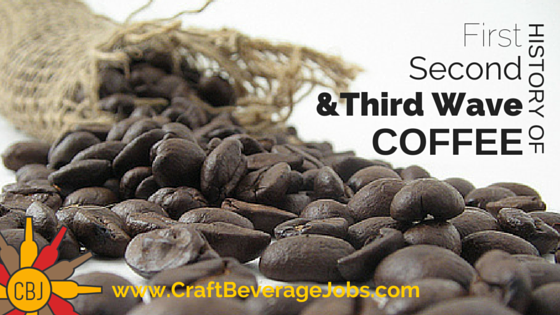
To understand the significance of “third wave” we need to look back to the “first” and “second wave” movements for coffee. Although the transitions from first, second and third wave are not always discernible, their priorities were certainly unique:
- 1st Wave: Growing coffee consumption exponentially.
- 2nd Wave: The defining and enjoyment of specialty coffee.
- 3rd Wave: Purchasing coffee based on its origin and artisan methods of production.
There are significant events from each movement, which illustrate these unique priorities.
The History of First Wave Coffee
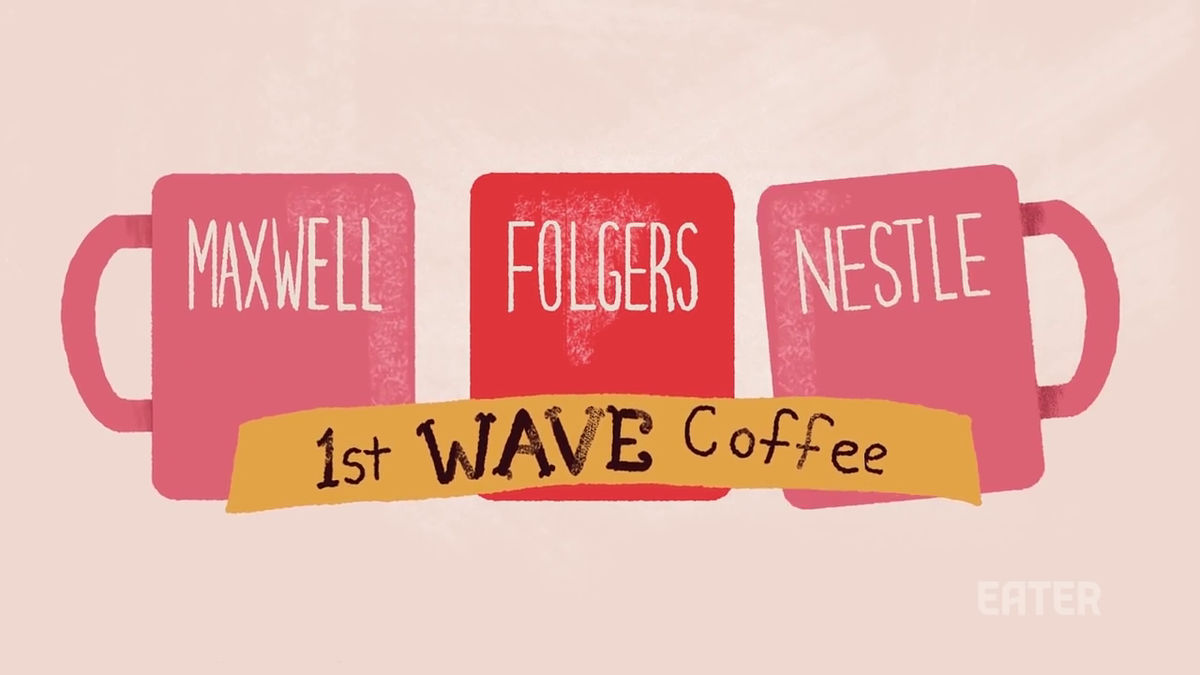
First wave coffee can trace its roots back to the 1800’s, when entrepreneurs saw a market for providing coffee that was both affordable and “ready for the pot”. Coffee brands like Folgers and Maxwell House would quickly become household names across the United States.
This first wave receives criticism for sacrificing taste and quality to promote convenience and mass production.While the quality of the mass marketed brew may be frowned upon, the innovations in processing, packaging and marketing would allow the coffee industry to skyrocket into the future.
Vacuum Packaging
Perhaps the most significant innovation came from shipbuilders turned coffee roasters, Austin and R.W. Hills, founders of the Hills Bros. Coffee. In 1900, R.W. Hills invented the process of vacuum packaging. The process removed air from coffee tins, resulting in fresher beans. This process changed the way coffee would be packaged to this very day. The source for coffee moved from the local roaster to the retail shelves of grocers from San Francisco to Chicago and eventually New York.
Instant Coffee
In the early 1900’s, America was on the move! Modern industry produced and marketed products that were both time-savers and convenient to use. It was the era of frozen dinners, electric razors, hair dryers and instant coffee!! In 1903, Japanese-American Satori Kato, applied his dehydration process for soluble tea, to coffee and received thenescafe instant coffee poster very first U.S. patent for “Coffee Concentrate and Process of Making Same”, better known as “instant coffee” (U.S. Patent No. 735,777 – August 11,1903). Instant coffee was quick and easy, and didn’t require brewing equipment. It was perfect for the rations of WWI soldiers in 1917. By 1938, Nestle’, with their Nescafe instant coffee, became the most innovative of the instant coffee brands and marketed their new instant beverage, even supplying the U.S. military for WWII. The new modern lifestyle of the mid-1900’s would give instant coffee its spotlight. By the 1970’s almost one-third of imported roasted coffee was processed into instant coffee, but by the 80’s the discerning taste-buds U.S. “foodies” brought its downfall.
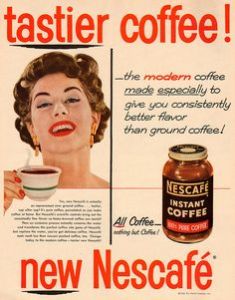
Folgers: The Best Part Of Waking Up
In the mid-1800’s, William H. Bovee founded The Pioneer Steam Coffee and Spice Mills company in California, where he began producing coffee that was pre-roasted, ground and sealed in small tins. What was previously considered a luxury for the upper class, Bovee made available for every middle-class kitchen. The carpenter Bovee hired to complete the construction of Pioneer Steam mill was a very young, James folgers logoA. Folger. According to Folgers Coffee history, after construction of the mill was completed, James ventured out to find gold. He left the mill but not before stocking up on samples of Pioneer coffee and spices, which he distributed to grocery stores all along the way. Long story short, James returned in 1865 to be a full partner and by 1872 bought the company, renaming it J. A. Folger & Co. The mass marketing of coffee in the United States was born. I was surprised to learn that the Folgers slogan, “the best part of waking up” is relatively new to the 150-year-old company. In 1984, the original jingle written by composer Leslie Pearl made its debut and has been a part of the brand’s identity ever since.
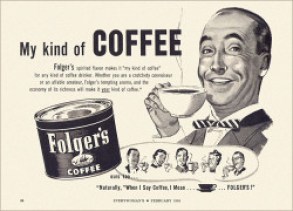
Maxwell House: Good To The Last Drop
In the late 1800’s a coffee broker by the name of Joel Cheek named his new coffee blend “Maxwell House”, after the Maxwell House Hotel in Nashville, Tennessee where his special blend was served. Along with business partner, John Neal, they founded the wholesale grocery distribution company, Nashville Coffee and Manufacturing with the Maxwell House Coffee brand leading their portfolio of products. The slogan, “good to the last drop” began to be used in Maxwell House Coffee advertising, after claims that the phrase was made by President Roosevelt upon taking a sip of Maxwell House Coffee. The company prospered in the 1900’s and by 1924, the advertising budget for the Maxwell House brand was a whopping $276,894. The marketing investment paid off, and one year later Maxwell House Coffee was the most well-known brand across the United States.
Mr. Coffee
Before moving on to the second wave of coffee, I would be remiss not to mention the invention of the first automatic drip home coffee maker from entrepreneur Vincent Marotta. Marotta called his coffee maker, Mr. Coffee! Mr. Coffee machines were a marketing sensation, with “The Yankee Clipper” himself, Joe DiMaggio as its spokesperson. By the end of the 1970’s, over 40,000 Mr. Coffee’s were being sold every day. For a timeline of 1900’s coffee history, check out The History of Coffee by Professor Peaberry.
